When it comes to your kitchenware, you want to find the best durable and appealing material. However, it might be a challenging experience due to the numerous choices available. If you are torn between porcelain and stoneware, this article is meant to help You make the right choice in terms of durability, price, texture, and colors.
Porcelain and stoneware are both classy and durable dinnerware. However, if you are looking for a more elegant dinnerware with finer decoration yet strong, go for porcelain. If you are looking for a more durable and thicker dinnerware, choose stoneware.
Although porcelain and stoneware might look similar since they are both ceramic, there are noticeable differences between the two materials if you are keen enough.
Porcelain overview
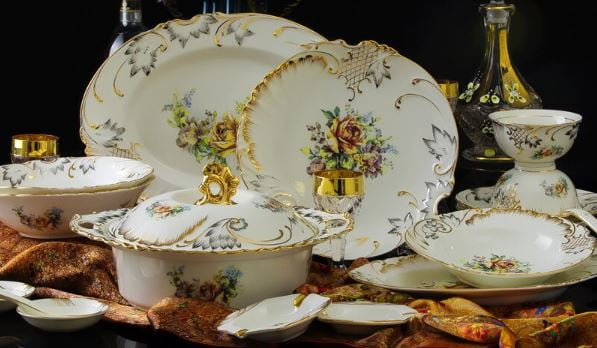
Porcelain kitchenware is made of a special type of clay with fine particles which is heated at high temperatures to give a non-porous final product. It is one of the most strong and durable kitchenware with an appealing translucent appearance. It is heat resistant, meaning it is (microwave, dishwasher, and oven) friendly since it’s manufactured under high temperatures.
Traditionally, porcelain was only available in white, but you can now find porcelain items in different colors.
Porcelain is categorized into three types:
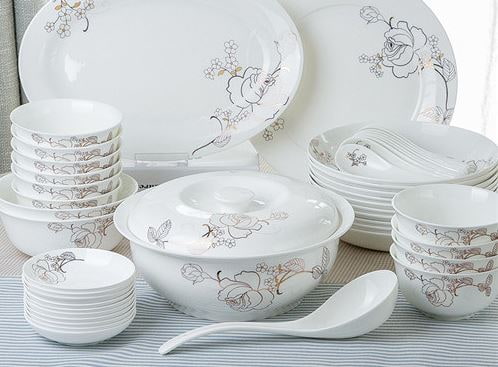
- Bone China: This type of porcelain is made by mixing kaolin clay with bone ash extracted from cow bones. Bone ash or calcium phosphate makes bone china products very strong and durable. It also makes the items appear translucent and milky white. Bone china can withstand high temperatures therefore it is microwave safe. However, if your bone china is decorated with metals say Gold, you can not use it in the microwave as metals spark and can destroy the microwave or start a fire.
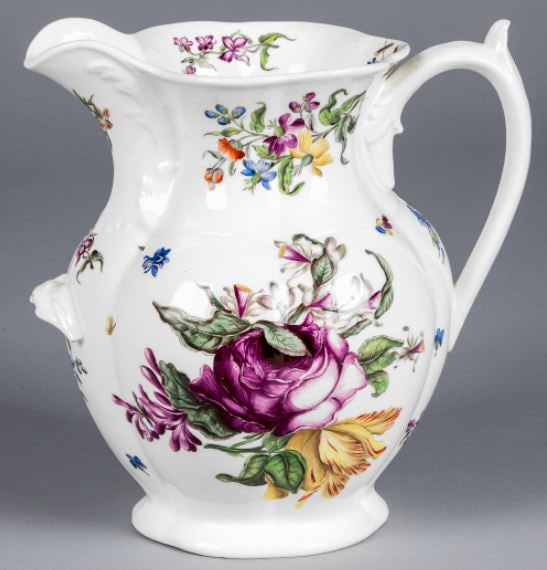
- Hard-Paste porcelain: True porcelain or hard-paste porcelain is made by mixing kaolin with petuntse and feldspar. It is then fired at high temperatures to form a durable product.
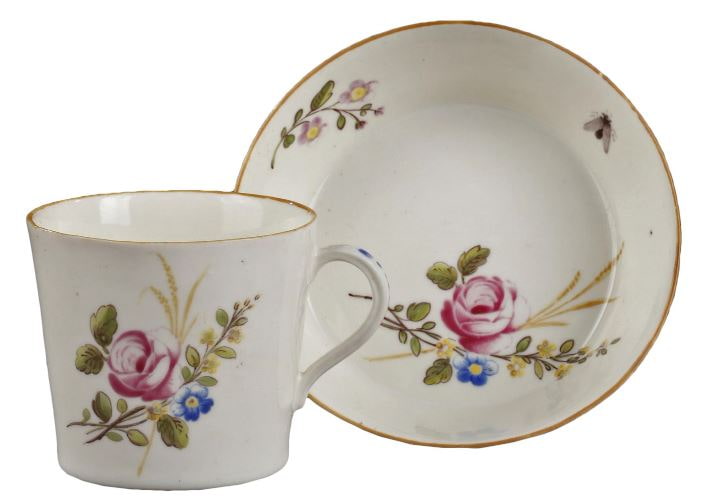
- Soft-Paste/Artificial porcelain: This is the most affordable and weakest type of porcelain since it is fired at lower temperatures and not mixed with additives that promote strength. Therefore, it breaks more easily than bone china and hard-paste porcelain.
Stoneware overview
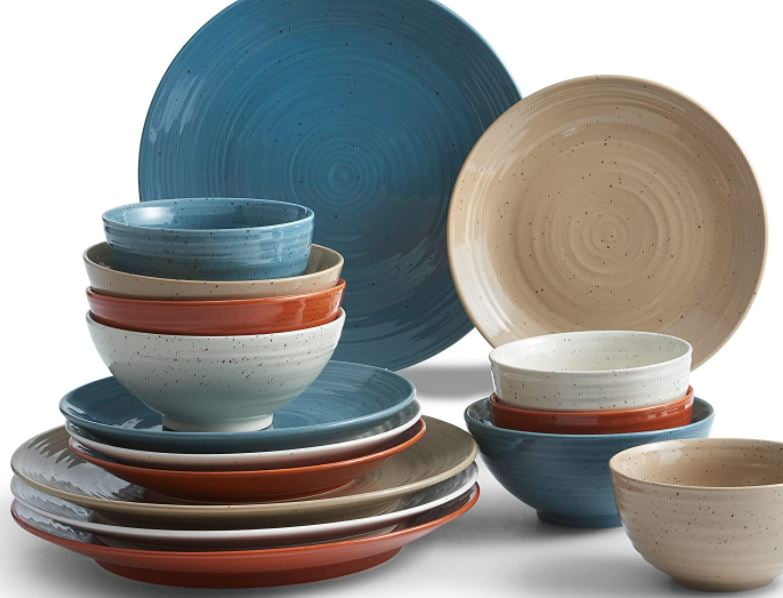
Stoneware is a durable and non-porous ceramic kitchenware made from heating stoneware clay at (2150-2330)°F. Due to the high temperatures, the final dinnerware is usually more opaque and durable than porcelain. Stoneware clay comes in 5 categories; traditional, fine, electrical, chemical, and thermal shock-resistant stoneware.
You can safely use stoneware in an oven, freezer, microwave, and dishwasher. However, some stoneware kitchenware has special paints that make them unsafe for the oven or freezer. Therefore, check the manufacturer’s specifications before using your stoneware kitchenware in an oven, dishwasher, or microwave. Though you can clean your stoneware in a dishwasher, it is safer to clean it by hand to avoid the risk of damaging it.
Porcelain vs. stoneware- the differences
If you are looking for kitchenware, it might be challenging to decide whether to buy porcelain or stoneware due to their various similarities. Porcelain and stoneware are both durable, non-porous, and have an elegant appearance. Additionally, you can use both in a microwave and dishwasher unless the manufacturer has specified otherwise. However, you should avoid immediate temperature change (for example, from the oven to the fridge or vice versa) when using porcelain or stoneware to avoid cracking.
Though porcelain and stoneware have these similarities, they have numerous differences:
Durability
Porcelain makes delicately thin yet stronger kitchenware. However, if you want a more durable kitchenware set, go for stoneware as its material and thickness make it resistant to cracks. Therefore, you can use stoneware on a daily basis as it hardy chips easily whereas porcelain for occasions such as special dinners due to its delicate nature.
Weight
You can differentiate a porcelain and stoneware item by weighing or lifting them. Due to the course clay material in stoneware, the kitchenware tends to be heavier than porcelain.
Besides the weight, stoneware items are also thicker. When you compare the edges of a stoneware bowl to that of porcelain, you will note that the stoneware bowl is thicker. If you have weight preference while choosing kitchenware you now know what to go for.
Appearance
Porcelain is commonly available in white due to the components used to make it. However, you can find some porcelain items in different colors, like black. Porcelain also comes in different shapes. Its thin nature allows it to be molded into different shapes under high temperatures.
Stoneware on the other hand comes in different colors. The stoneware clay can have earthly tones such as white, a variety of browns, or gray. Manufacturers can also mix the clay with chemicals like iron oxide to form red terracotta stoneware items.
Porosity
The porosity of ceramic can indicate the item’s durability, strength, thermal shock resistance, and density. Therefore, it is important to know the porosity of the kitchenware you are planning to buy. Stoneware has a 3% or less porosity depending on the firing temperatures. Therefore, they are waterproof and do not necessarily need to be glazed.
Since porcelain is heated at high temperatures and mixed with various elements, it is usually non-porous. However, soft-paste porcelain can be slightly porous because it’s heated at lower temperatures.
Cost
If you are working on a tight budget, you can opt for stoneware since they are less expensive and easily available. Porcelain is more expensive than stoneware due to various reasons. First, the process of making a porcelain product is difficult and expensive since it is fired at extremely high temperatures. Second, kaolin clay, the main component of porcelain, is rare and thus expensive. And lastly, they are finely decorated into elegant dinnerware for special occasions.
Which one is better: porcelain or stoneware?
The choice will depend on your preferences mostly in terms of use and cost since both porcelain and stoneware make great kitchenware. If you want cheap dinnerware that you can use daily, then stoneware dinnerware would be the best option for you. If you are planning a special occasion go for porcelain dinnerware since they have beautiful designs and an elegant appearance.
Generally, porcelain dinnerware is delicate, luxurious, and lightweight. Additionally, it is strong, non-porous, smooth, and more expensive than stoneware.
Stoneware on the other hand is more durable, thicker, heavier, and comes in different colors.
They are also safe to use in ovens and freezers, and dishwashers. So, pick the one you like most and give your kitchen a new stunning look.
